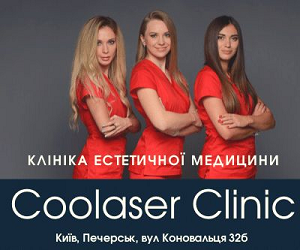Auto - Show Biz clinic originally published at Auto - Show Biz clinic

I just bought this etching (?).
I recently purchased this etching (???? ), “The Hot Peanut,” at a local thrift store. The note on the back was intriguing, as well as the subject matter (early Brooklyn Street). Lola Mueller (1889-1949), a well-known San Antonio artist, was best known for her watercolors. Ed H. Herpel was listed as residing at 246 Cloverleaf Ave., Alamo Heights in the 1940 census.
There is an online work that looks similar to “The Hot Peanut”: “The Hominy Vendor,” which appears to be in the same San Antonio area. This would be consistent with the pencil inscription of the title (at) lower left. This would be consistent with the pencil inscribed title (at) lower right.
Paula Alle on S.A. Art Scene:
The mystery surrounding the origins and purpose of San Antonio’s “Brass Muggers Club” is still a mystery
The back of the note is written in type and dated “San Antonio Texas/June 15, 1942.” The message continues with the following:
“Old people live in the past, and it is one of my great pleasures to think about my friends of that past and you as one. You have been a friend to me many times, for which I am grateful to you. This scene is familiar to your. It is the work of Lola Mueller.
“Please accept it as a token of your kindness. Your memory will always be a pleasant one to me.”
It’s signed “Emil Rasmussen,” both typed and handwritten.
So why would this scene be familiar to the Herpels? Because that peanut stand is probably the one that belonged to Rasmussen.
According to a story in the San Antonio Light, Dec. 10, 1939, he had operated this small business for six years at the corner of Brooklyn Avenue and Augusta Street. The elderly entrepreneur, who had come from Denmark to work on the Panama Canal, was elected mayor of Revere (Minn.) before moving to San Antonio to start a tool factory. To keep his wares warm, Rasmussen constructed a small oil stove to be below his “red express wagon”.
Alamo gives San Antonio artist a career boost later in their lives
Mueller was an award-winning painter/lithographer who received her training at the Witte School of Art and San Antonio Art Institute. She had a natural affinity for local scenes and characters, particularly if they highlighted vanishing folk customs. Her style is to show rather than reproduce what she saw in San Antonio. Although the seated, hat-wearing, figure in “The Hot Peanut” is not a photorealistic portrait, it is a representation of Rasmussen. However, her art reminds us that her style is to suggest rather than reproduce what she saw on the streets of San Antonio. According to the 1910 U.S. Census and San Antonio city directories, she was a teenager saleswoman at Joske’s department shop. She married Frederick Emanuel Mueller the following year, a salesman at Washer Bros.
Manny Mueller later opened his own Alamo Plaza clothing boutique and had two children. Lola Mueller began taking adult art classes at Witte in her mid-life. This was probably shortly after they started in 1933.
The school did not offer a degree-granting program at the time, but its faculty included distinguished artists of international and national standing. Jose Arpa (most often cited in articles on her) and Mary Ann McMillan (most frequently cited in articles
Discussed here August 20, 2016, Harry Anthony DeYoung and Clare Duer, Henry Lee McFee, all of which had outstanding artistic pedigrees — well known schools (New York’s Art Institute of Chicago, New York’s Art Students’ league), prestigious commissions (“World’s Fair and post office murals”), prestigious works (World’s Fair, Alamo paintings, and major museums (the Metropolitan Museum of Art and Museum of Modern Art, Whitney in New York).
Paula A. Allen on Arpa :
Society painters were attracted to artist’s summer camps
If the Herpels were interested in art, Mueller’s name might be familiar. Her work was often featured in Witte student art shows. She was a good pupil of famous artists. Within a few years of taking her first courses, she was receiving regional recognition such as inclusion in the Texas General Exhibit at the Texas State Fair and the watercolor division of the Southern States Art League’s annual circuit exhibition.
On the national level, Mueller was represented at print-making exhibitions at the Library of Congress in Washington, D.C., and the Carnegie Institute in Pittsburgh and won a first prize from the National Society of Arts and Letters in Chicago.
Her most cherished work was “The Hominy Vendor,” which was a representation of “Sister Tennie Crockett” (
August 27, 2016, covered. He sold fresh hominy and offered Christian ministry out of a horse-drawn wagon. The human figures in the pictured scenes are, as with “The Hot Peanut”, essentially unrecognizable and the setting is sparsely described.
Allen on hominy vendor:
Late prof’s questions: Hominy, prayers
Mueller “is able to retain a mental picture of scenes from her life is evident in her works,” according to an Express story, January 31, 1943 about her one-woman show, at the Witte. Based on the photo and the story, Beth Standifird, San Antonio Conservation Foundation librarian, thinks this was the east corner of Brooklyn. There is part of the house at Brooklyn (the only two-story house at this intersection) at the left. A fence and a fire hydrant appear in both your print and the photo, although Mueller may have taken some artistic license with the rest of the scene.
It’s harder to speculate about the friendship between Rasmussen and the Herpels.
Rasmussen, (1865-1947) a bachelor, opened his San Antonio Tool Works in 1910 at 803 S. Alamo St. Over the next 10 years, his machine shop moved three times, and according to a notice in the Light, Feb. 22, 1920, he sold his “entire plant” at 113 Nacional St. to Lone Star Motor Truck and Tractor Co. (covered here June 22, 2008). It was too early for a man with 27 year to live. So, the former toolmaker tried other roles, including watchman at City Public Service, confectioner, and restaurant owner. His residence was moving almost every year.
Edward H. Herpel (1889-1948), and Mayme, his wife, enjoyed a steady climb. E.H. Herpel was a pioneering automobile dealer. He started in 1912 at H&H Repair Shop at 416 Eighth St., and he progressed to salesman and manager at Universal Car Co., which was then vice president at Yantis-Herpel. By 1926, he was president of Herpel-Gillespie, a descendant of the original Ford dealership here.While histories of Herpel-Gillespie don’t name Rasmussen as an employee, the men may have had a business relationship while the older man was still a toolmaker, and the couple may have helped Rasmussen with some of his many moves.
Mueller died in 1949 from complications of Graves’ disease. The scholarship was established by her family and friends to provide art supplies for students who were exceptional and required financial aid.
The Witte also has four Mueller works. River” and a greeting card called “Chili Stand”, neither of which are currently on display.
historycolumn@yahoo.com| Twitter: @sahistorycolumn| Facebook: SanAntoniohistorycolumn
Auto - Show Biz clinic originally published at Auto - Show Biz clinic











